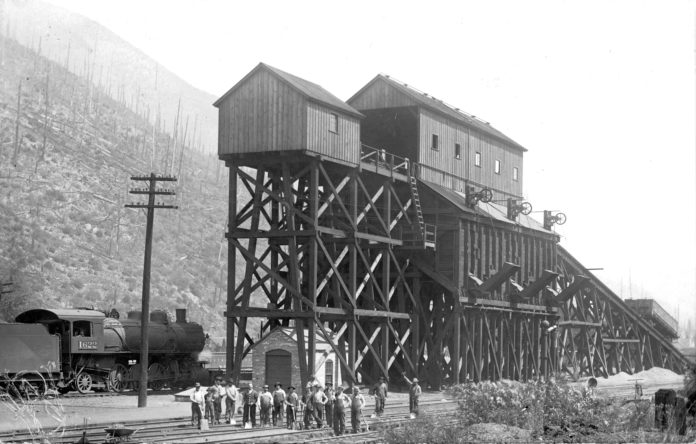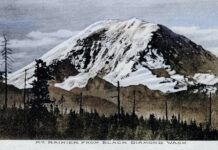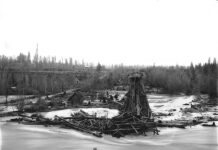
Last week’s column highlighted Northern Pacific Railroad’s Stampede Pass line which connected the east and west sides of Cascade Mountains near Snoqualmie through a two-mile tunnel. To service that rail line completed in 1888, a number of small towns sprouted in the upper Green River valley above Kanaskat-Palmer.
Stations along the way included Lemolo, Eagle Gorge, Baldi, Troutdale, Humphrey, Maywood, Nagrom, Hot Springs, Lester, Weston, Kennedy, Borup, and Stampede. Most were logging camps or telegraph stations. The most important was Lester, which in its Golden Age featured a two-story schoolhouse, a six-stall roundhouse (for locomotives), hotel, offices, bunk houses, store, garage, and a beanery (i.e. cheap restaurant).
In the early days Lester primarily served the needs of the railroad. Crews were stationed there to maintain the tracks, service trains, and provide labor for the pusher engines whose supplemental power helped locomotives climbed the steep grades of Stampede Pass. Until 1944 all the engines that traveled the Stampede railroad were steam locomotives burning coal.
To clear the tunnel of steam and smoke, a ventilation plant was operated from the Stampede station. After 1944, the NP Railroad began replacing steam engines with diesel locomotives which spelled the beginning of Lester’s demise. Shown here in this circa-1910 photo is the three-story wooden coal dock used to fuel the pusher engines stationed in Lester.
Sixteen railway worker pose in front of the coal station with NP locomotive #1622 in the background. This photo #1998.33.5 by L. Bingham Water comes courtesy of the Washington State Historical Society. It was once used as a postcard, dated Sept. 17, 1911 and postmarked from Lester. Next week more about Lester and its railroad, logging, and Tacoma watershed legacy.







